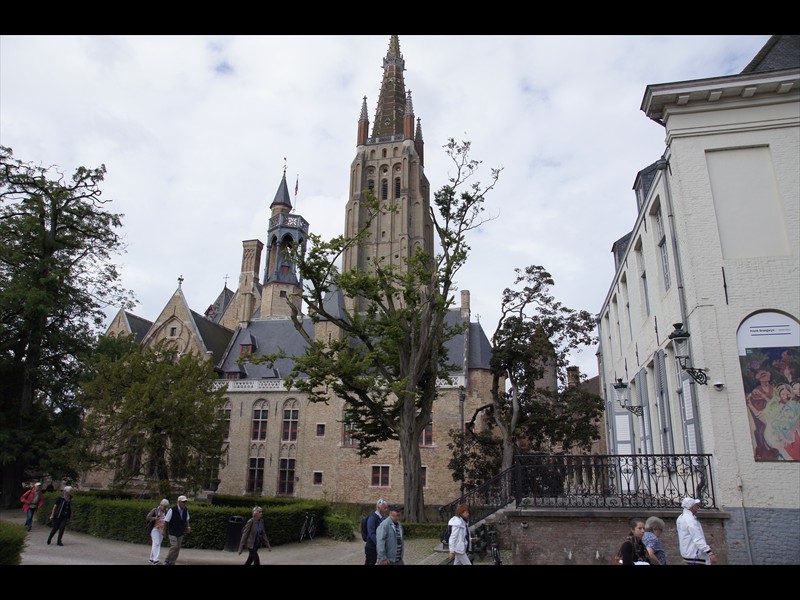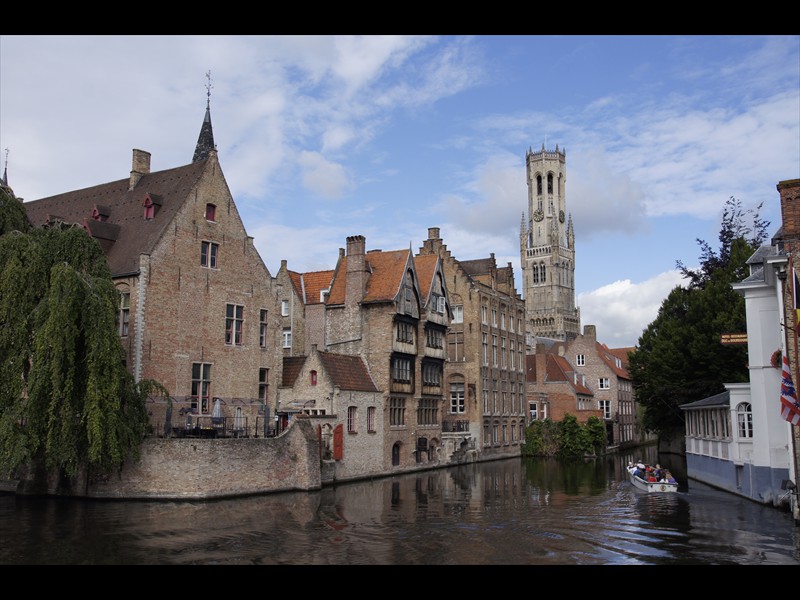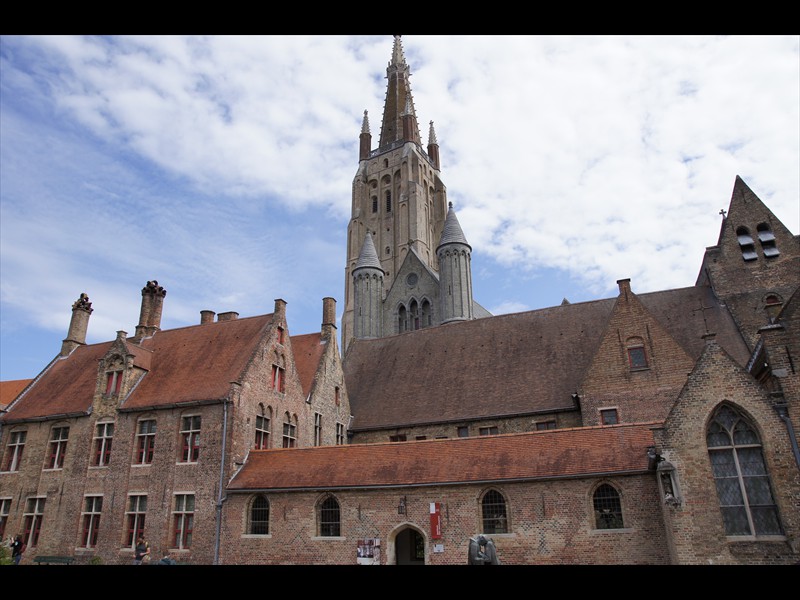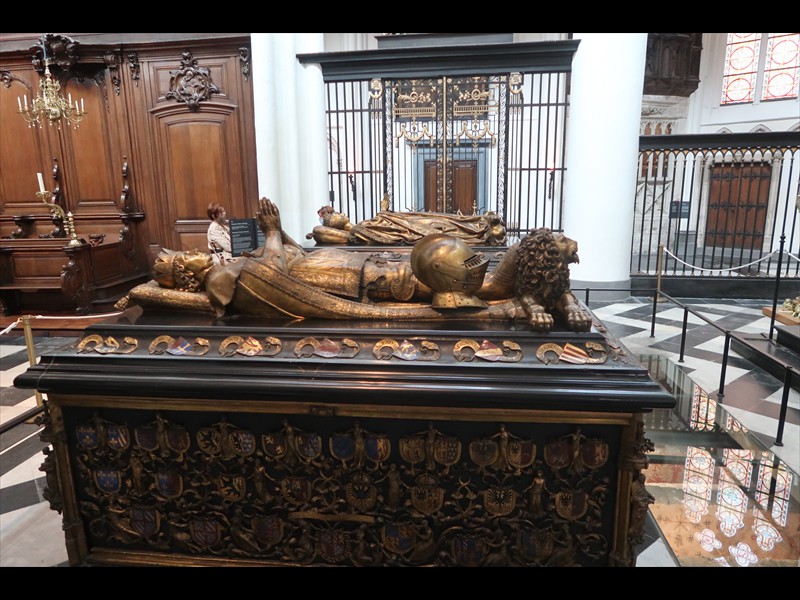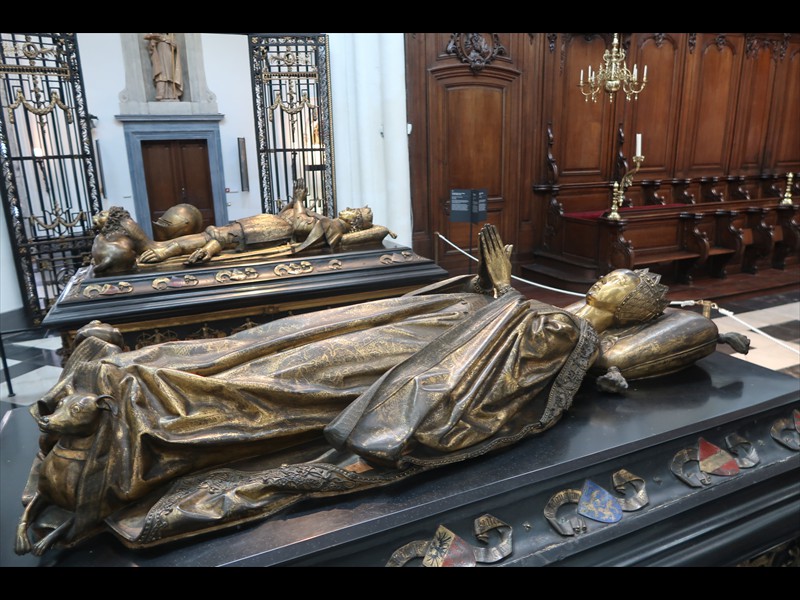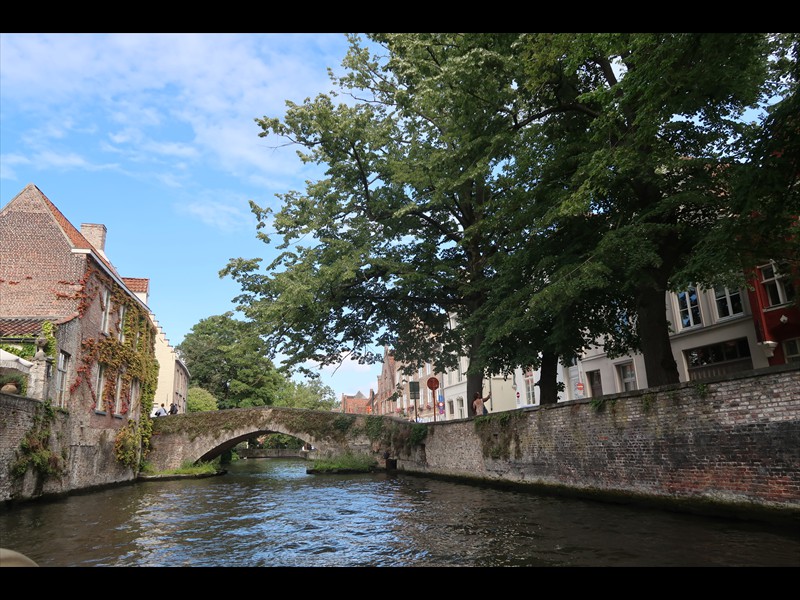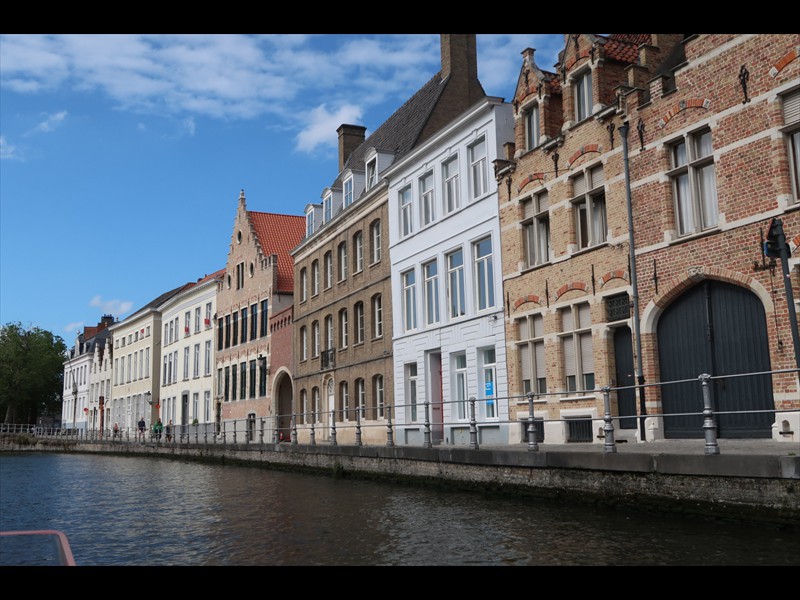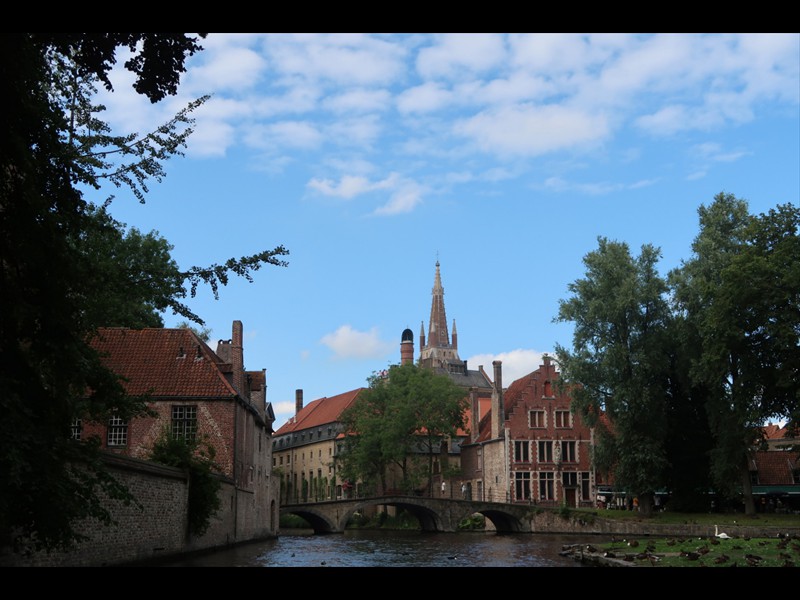Although the Bruges region was already populated in Roman times, the city’s name appears for the first time in the 9th century, probably derived from the Old Germanic word ‘brugj’, which means ‘mooring’. Bruges has always had a special bond with the sea. After all, water played a crucial role in the city’s foundation. It was the place where several streams merged into a single river (the ‘Reie’), which flowed north into the coastal plain. This river was linked to the North Sea through a series of ‘tidal channels’, guaranteeing the city’s future welfare and prosperity.
A favourable location
In the early Middle Ages, Bruges developed into an international and bustling trading city with its own port, made possible by its favourable location and connection with the sea. At the same time, the fortified town became a powerful political stronghold, thanks to the presence of the Flemish Counts, who ruled over the County of Flanders. In the 13th century, Bruges was the leading trade centre of northwestern Europe. Merchants from all over Europe settled in the city and the world’s first ever stock exchange (‘Beurs’ in Dutch) was founded in Bruges. These market activities took place on a square in front of the house owned by a powerful family of brokers, the Van der Beurse family. As a result, their name became linked for all time with this kind of financial institution. In spite of the typical medieval maladies, the citizens of Bruges prospered, and soon the city developed a magnet-like appeal. Around 1340, the inner city numbered no fewer than 35.000 inhabitants.
The golden century
The success continued and in the 15th century, Bruges’ golden century, business was better than ever before. This was due to the fact that from the end of the 14th century, Flanders was part of the realms of the dukes of Burgundy. They expanded their presence in Bruges, turning the city into a cultural and commercial centre that was second to none. In addition to the traditional broadcloth, numerous new luxury goods were now produced and sold. Famous painters such as Jan van Eyck and Hans Memling – the great Flemish primitives – found their creative niche here. The fine arts flourished, and in addition to wonderful churches and unique ‘nation houses’ (embassies), the monumental town hall was also completed. Bruges’ success seemed imperishable.
Decline
The sudden death in 1482 of the much loved ruler, Mary of Burgundy, heralded the start of new and less fortunate times for the city. The relationship between the citizens of Bruges and their lord, the widower Maximilian of Austria, turned sour. The Burgundian court left the city, with the international traders following in its wake. To make matters worse, Bruges’ connection with the sea quickly silted up. The Golden Age had passed and was succeeded by long eras of war and regime change. By the time Belgium gained independence (1830), Bruges was a poor and impoverished provincial city. Strangely enough, its fortunes were changed for the better by the writing of a novel.
Revival
In Bruges la Morte (1892), Georges Rodenbach aptly describes Bruges as a somewhat sleepy, yet extremely mysterious place. In particular, the 35 pictures that were included in the book for illustrative purposes sparked his readers’ curiosity. Soon Bruges’ magnificent patrimony was rediscovered and its mysterious intimacy turned out to be its greatest asset. With great care, Bruges took its first steps into tourism. The age-old desire to be connected with the sea resulted in the development of a new international seaport at the end of the 19th century, which was given the name of Zeebrugge.
Bruges today
During the First World War, Zeebrugge became the operational base for the German submarine fleet, coordinated from their headquarters on the Market Square in Bruges. Fortunately, both world wars left the historic city centre virtually unscathed, making Bruges increasingly appealing to visitors and culture-lovers alike. Its beauty and attraction was confirmed in 2000, when UNESCO classified the entire medieval inner city as a world heritage site. The rest, as they say, is history.
(Source: visitbruges.be)
Views of Bruges
Church of Our Lady
A first Romanesque church was probably built between 850 and 875. Only a wall of the foundation has been preserved. In the 12th century, an early Gothic nave was built, to which a choir ambulatory and chapels in the classical style of French Gothic were later added. Also in the following centuries the church was built and the interior was renewed.
Tomb of Charles the Bold and Mary of Burgundy
After a fall from her horse, Mary of Burgundy died at the Prinsenhof in Bruges on May 27, 1482. She was just 25 years old, but had already ruled the Netherlands since 1477, the year of her father Charles the Bold's death. At her express wish, she was buried in the Church of Our Lady.
Her husband, Maximilian of Austria, commissioned this tomb in 1490. On the side walls, the family tree on the mother's and father's side is immortalized. At the head and foot there is an inscription on the tomb with a coat of arms and an enumeration of the territories over which Mary of Burgundy ruled.
The tomb of Charles the Bold is very similar to that of his daughter. However, it was completed 70 years later and stylistically it is partly assigned to the Renaissance. This is reflected, among other things, in the nymphs bearing the escutcheon and the style of the armor.
The canals of Bruges
Pictures from a boat trip on the canals of Bruges.
Begijnhof (Beguinage)
The 'Princely Beguinage Ten Wijngaarde' with its white-coloured house fronts and tranquil convent garden was founded in 1245. This little piece of world heritage was once the home of the beguines, emancipated lay-women who nevertheless led a pious and celibate life. Today the beguinage is inhabited by nuns of the Order of St. Benedict and several Bruges women who have decided to remain unmarried.

Overview page River Cruise


